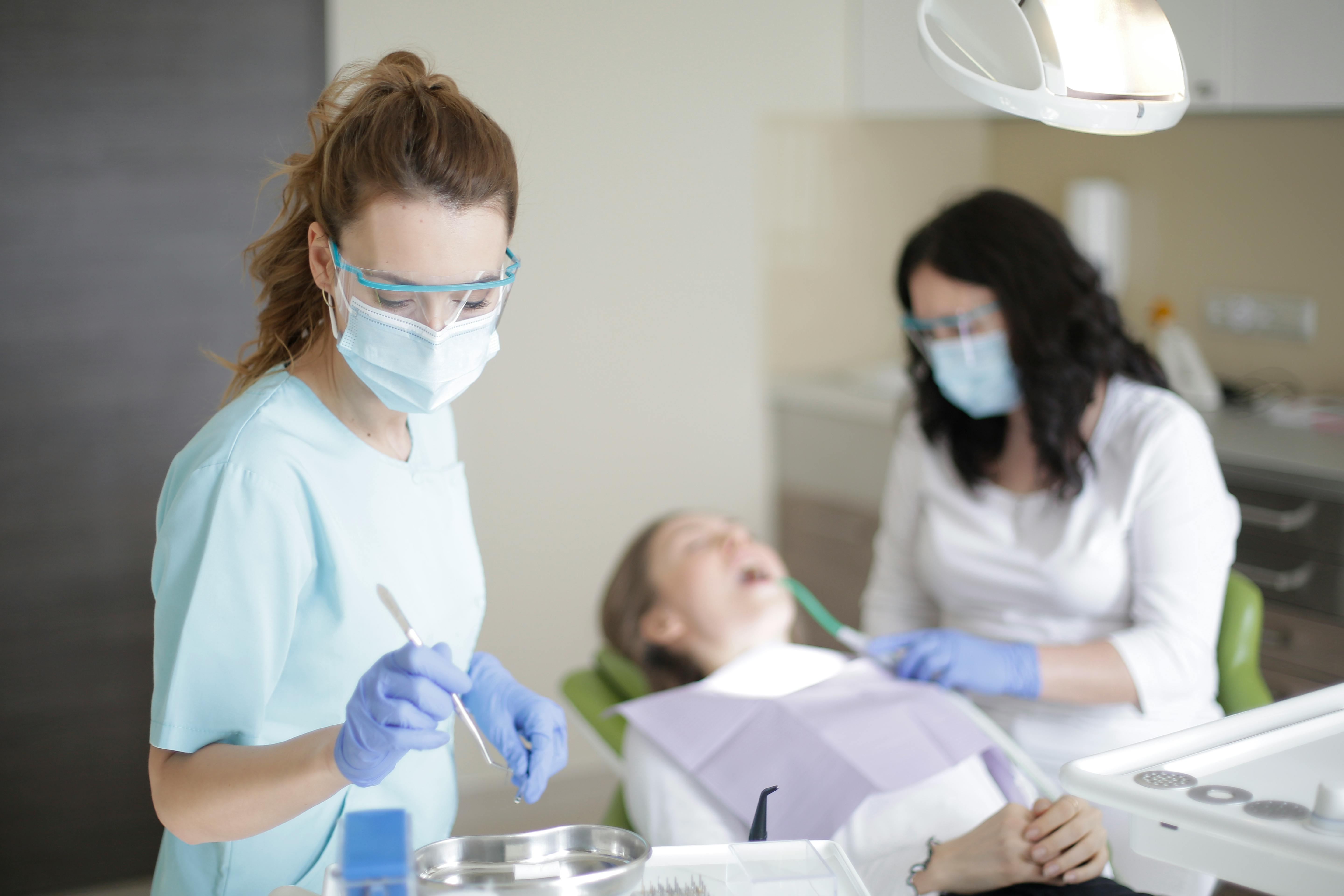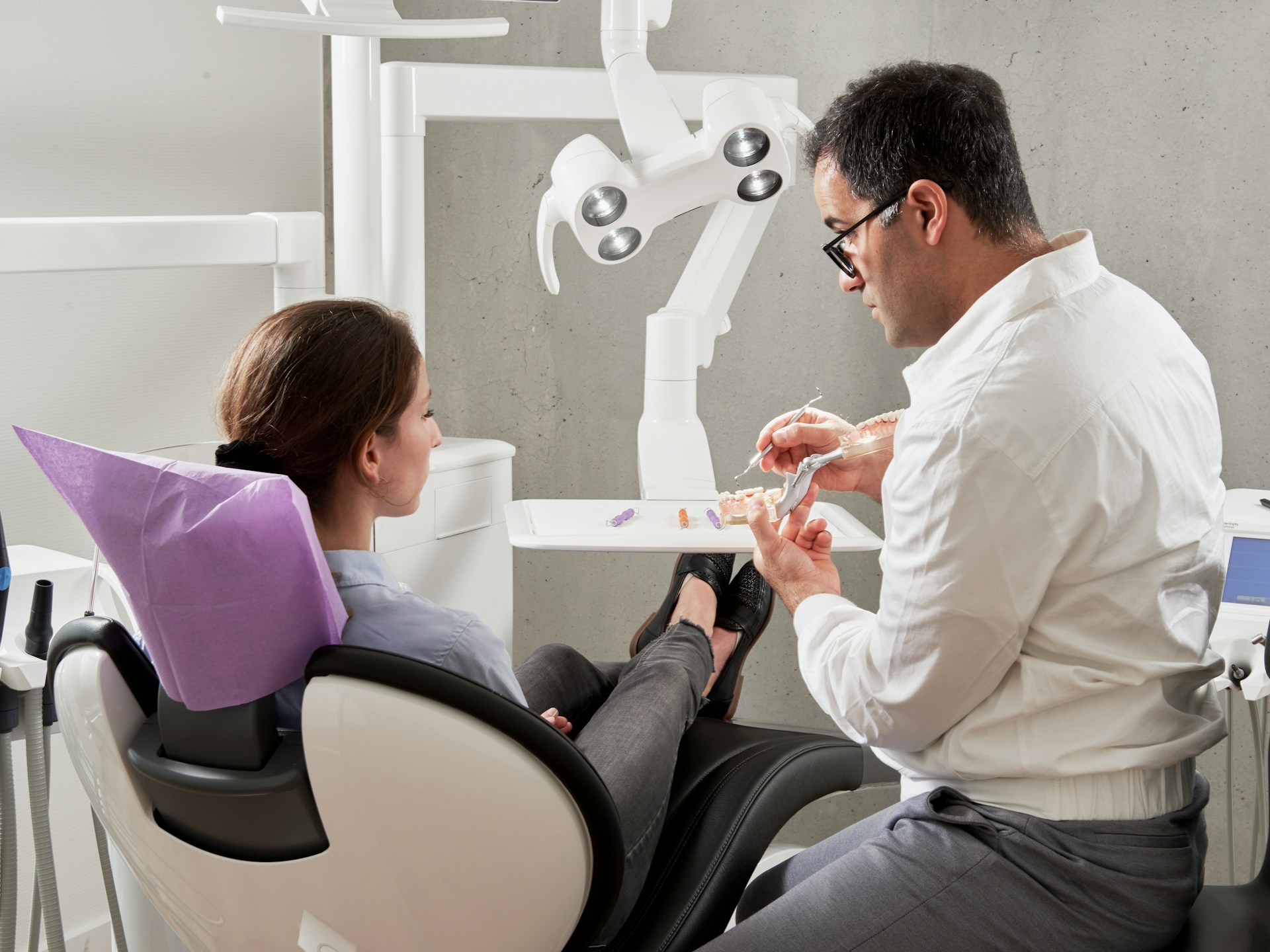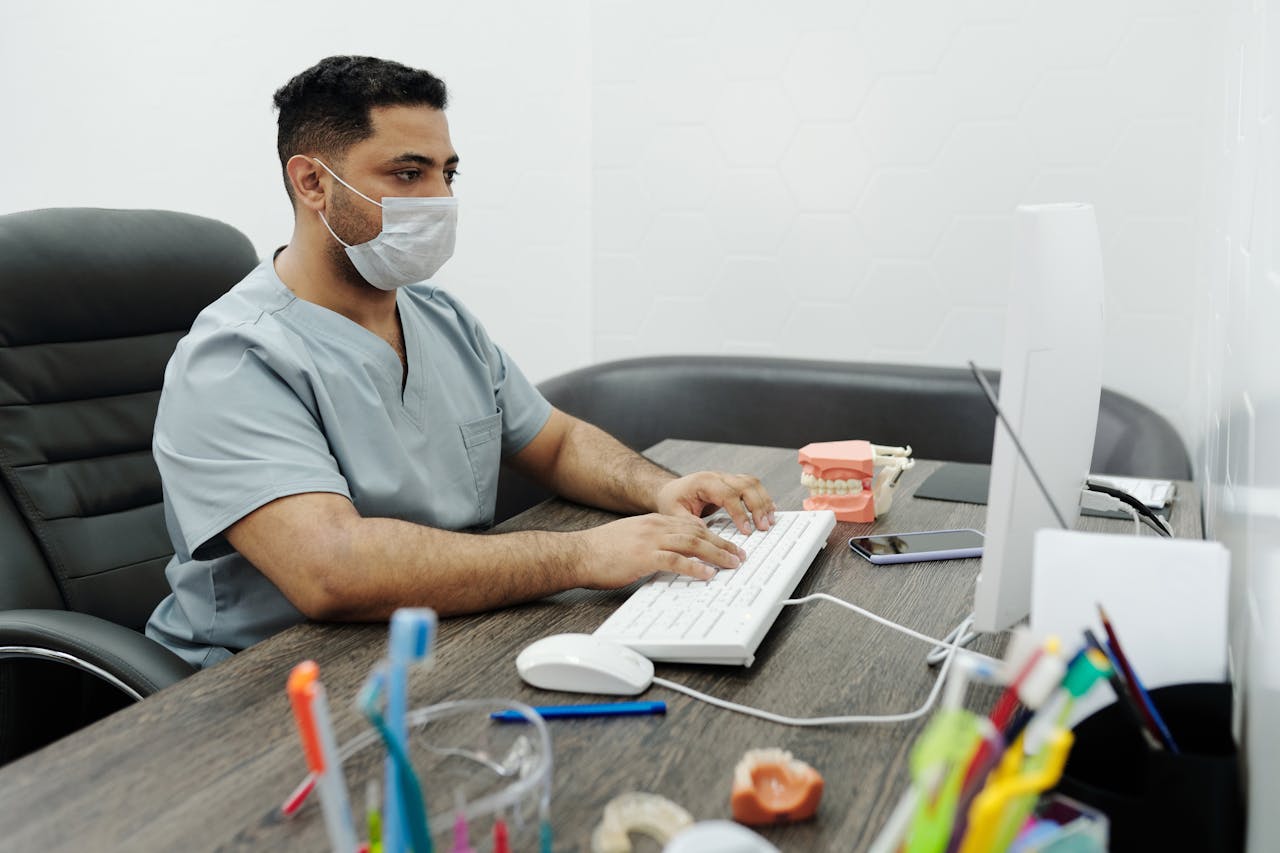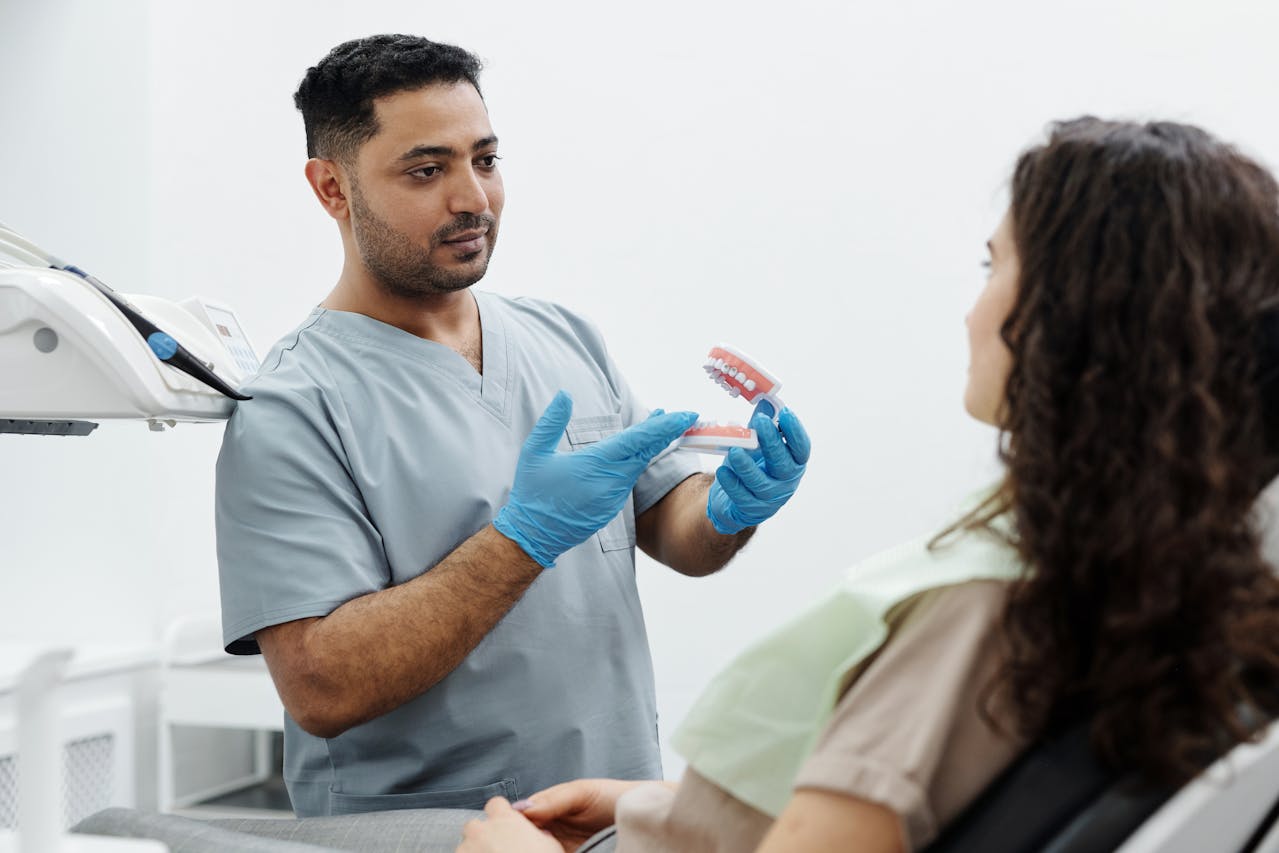How Much Do Dental Clinics Make in New York – 2025

Dental clinics in New York are seeing impressive revenue figures in 2025. The average dentist in New York City earns between $200,000 and $226,000 annually according to recent data. A successful dental practice in New York can generate between $1.5 million and $2.5 million in annual revenue, with profit margins typically ranging from 30-40% after expenses.
These numbers reflect the premium dental care market in New York, where higher costs of living and operating expenses are balanced by patients willing to pay more for quality services. Many practices are finding that specialized dental treatments command even higher rates, contributing significantly to overall clinic revenue.
The financial landscape for dental clinics continues to evolve with increasing overhead costs and insurance reimbursement challenges. However, practices implementing efficient management systems and expanding their service offerings are maintaining healthy profit margins despite these pressures.
Key Takeaways
- Dental practices in New York City average $1.5-2.5 million in annual revenue with 30-40% profit margins in 2025.
- Specialized services and efficient practice management systems significantly increase profitability for dental clinics.
- Front desk automation and streamlined patient communication systems reduce overhead costs by 15-20% for most practices.
Dental Clinic Revenue In New York 2025
Dental practices in New York are seeing significant revenue shifts in 2025, with regional economic factors and practice models creating notable variations across the state. Location, specialization, and operational efficiency remain critical factors in determining profitability.
Key Revenue Drivers For Clinics
The dental industry outlook for 2025 identifies several key revenue drivers for New York dental clinics. Specialized services like cosmetic dentistry and implants generate 30-40% higher margins than standard procedures. Clinics offering sedation dentistry command premium rates, often 25% above market average.
Digital technology adoption has become essential. Practices using CAD/CAM same-day restorations report 15-20% revenue increases through efficiency gains and higher-value services.
Insurance participation remains complex. While participating in major networks ensures patient volume, selective participation in high-reimbursement plans yields better margins.
New York's urban centers support higher fee structures. Manhattan practices charge approximately 35% more than those in outer boroughs for identical procedures.
• Cosmetic procedures: $1,200-2,500 per case • Implant services: $3,000-5,000 per implant • Clear aligner therapy: $4,500-6,500 per case
Average Income Figures In 2025
New York dental clinics show varied revenue profiles in 2025. Solo practices typically generate $800,000-1.2 million annually, while multi-dentist practices often exceed $2.5 million. Location significantly impacts these figures.
Manhattan-based practices report the highest revenues, averaging $1.5-2.2 million for solo practitioners. Brooklyn and Queens practices follow at $900,000-1.3 million, while upstate urban centers like Buffalo and Rochester average $750,000-950,000.
Practice owners take home between 25-40% of gross revenue after expenses. The average dentist salary for owner-operators in New York City reaches $270,000-350,000, approximately 30% higher than the national average.
Associate dentists earn $150,000-220,000 depending on experience and location. Specialists command significantly higher compensation, with oral surgeons and orthodontists earning $350,000-500,000 annually in the New York market.
New York's high cost of living offsets these impressive figures, with overhead expenses running 15-20% above the national average.
Factors Affecting Dental Profit Margins
Several key factors determine profit margins for New York dental clinics in 2025. Overhead costs remain the primary challenge, with real estate expenses in prime locations consuming 8-12% of gross revenue. Staff compensation represents another 25-30% of expenses.
Operational efficiency has become crucial. Practices with streamlined scheduling systems report 12-15% higher production per chair. Digital workflows reduce lab costs by 20-25% for many procedures.
Patient acquisition costs have increased. Marketing expenditures now average 4-6% of revenue, up from 2-3% in previous years as competition intensifies. Practices focusing on patient retention see 30% higher lifetime value metrics.
Insurance reimbursement rates continue to lag inflation. Many dentists in private practice report effective reimbursement decreases of 8-12% when adjusted for inflation over the past five years.
Supply chain disruptions have stabilized, but material costs remain elevated. Practices implementing inventory management systems report 5-7% cost savings on consumables.
Challenges Facing New York Dental Practices
Dental clinics in New York face several significant hurdles that directly impact their profitability and operations in 2025. These challenges require strategic solutions to maintain practice growth and financial stability.
Staffing Issues In Dentistry
The shortage of qualified dental professionals continues to plague New York practices in 2025. Many clinics struggle to find and retain skilled dental hygienists and assistants due to increasing demand and competitive compensation packages.
Recruitment costs have risen by approximately 15% since 2023, with the average dental practice spending $7,500-$10,000 per new hire. This financial burden is particularly heavy for small and mid-sized practices.
Staff turnover rates hover around 25% annually, creating disruption in patient care and administrative continuity. Practices must invest in:
- Competitive salary packages ($75,000-$95,000 for hygienists)
- Professional development opportunities
- Improved work environments
- Flexible scheduling options
Many New York practices now offer profit-sharing models to improve retention, with 30% of successful clinics implementing this approach. Training new staff also requires 4-8 weeks of reduced productivity, directly affecting revenue.
Patient Scheduling Obstacles
Efficient scheduling remains a critical challenge for dental practices in New York. No-show rates average 15-20%, resulting in approximately $70,000 in lost revenue annually for a typical practice.
The dental industry trends show patients increasingly expect convenience and flexibility. Last-minute cancellations create scheduling gaps that are difficult to fill, reducing daily production targets by up to 30%.
Key scheduling problems include:
- Double-booking risks that can overwhelm staff
- Difficulty balancing emergency appointments with routine care
- Ineffective reminder systems
- Inconsistent scheduling protocols
Practices using automated scheduling systems report 40% fewer no-shows, but 65% of New York dental offices still use outdated scheduling methods. The cost of implementing modern scheduling software ($5,000-$8,000) presents a barrier for smaller practices.
Impact Of Missed Calls On Revenue
Missed phone calls represent a substantial revenue loss for New York dental practices. Each unanswered call potentially costs a practice between $500-$2,000 in lifetime patient value.
During peak hours, front desk staff can miss up to 30% of incoming calls. This translates to approximately 15-20 missed new patient opportunities monthly for an average practice.
The financial impact is significant:
- New patient acquisition cost: $300-$500
- Average patient lifetime value: $12,000-$15,000
- Potential annual revenue loss from missed calls: $180,000-$300,000
Front desk staff typically juggle multiple responsibilities, making consistent phone coverage challenging. During lunch hours (12-2 PM), call answer rates drop by 45%.
After-hours calls represent another vulnerability, with 28% of potential patients calling outside regular business hours. Many practices now employ virtual receptionists or call centers to capture these opportunities, though this adds $350-$500 in monthly overhead costs.
Automating Front Desk Workflows
Dental practices in New York are increasingly turning to automation to streamline operations and boost revenue. Front desk automation saves time, reduces errors, and allows staff to focus on higher-value patient interactions.
Benefits Of Workflow Automation
Front desk automation can dramatically cut administrative workload by 20-30% and save up to 10 hours of staff time weekly. This translates to approximately $20,000-$40,000 in annual labor cost savings for the average New York dental practice.
Key benefits include:
- Reduced paperwork errors (down 85% in most practices)
- Lower staffing needs (1-2 fewer FTEs for busy practices)
- Faster patient processing (check-in time reduced by 70%)
- Higher collection rates (typically 15-20% improvement)
Modern automation tools integrate seamlessly with existing practice management software, requiring minimal training. The ROI typically becomes positive within 3-6 months of implementation.
Reducing Manual Scheduling Tasks
Automated scheduling systems eliminate the time-consuming phone tag that drains front desk productivity. These systems can:
Fill schedule gaps intelligently: The software identifies open slots and automatically contacts patients from waitlists who best fit those times.
Reduce no-shows by 30-45%: Automated text and email reminders sent at optimal times (48 hours, 24 hours, and 2 hours before appointments) significantly improve attendance rates.
Handle rescheduling automatically: When cancellations occur, the system immediately works to fill the slot without staff intervention.
New York practices implementing these systems report gaining an average of 8-12 additional productive appointment hours weekly through optimized dental office operations.
Improving Patient Experience
Automation enhances patient satisfaction while simultaneously boosting practice revenue. Modern systems create a seamless experience from first contact through treatment completion.
Digital intake forms save patients an average of 15 minutes per visit while improving data accuracy by over 90%. This eliminates frustrating clipboard paperwork.
Self-check-in kiosks reduce wait times by 65% and allow front desk staff to focus on personalized service rather than data entry.
Automated payment reminders and options have increased on-time payments by 40% in New York dental practices, improving cash flow without awkward collection conversations.
Many patients actually prefer these digital interactions—83% of dental patients surveyed in Manhattan reported higher satisfaction with practices offering automated options compared to those using fully manual processes.
Boosting Revenue With Virtual Receptionists
Virtual receptionists offer dental practices a powerful way to capture more revenue without increasing staff costs. These AI-powered systems handle patient communications with greater efficiency than traditional front desk setups.
Increasing Answer Rate For Dental Calls
Dental practices miss about one-third of incoming calls, directly impacting their bottom line. This problem costs clinics approximately 15% in lost revenue according to industry data. Virtual receptionists solve this by:
- Answering calls 24/7, including after hours and weekends
- Handling multiple calls simultaneously
- Eliminating hold times that frustrate patients
- Managing overflow during busy periods
Virtual receptionists can answer 100% of calls compared to the 65-70% typically achieved by human staff. This dramatic improvement occurs because AI dental receptionists never need breaks, sick days, or vacations.
For New York dental practices facing high call volumes, this technology prevents potential patients from hanging up and calling competitors. Each answered call represents a potential appointment worth hundreds or thousands of dollars.
Converting Calls To Appointments
Answering calls is just the first step. The real revenue impact comes from converting inquiries into booked appointments. Virtual receptionists excel at this crucial task.
With proper AI implementation, practices can see booking rates improve dramatically:
Metric Before AI After AI
Booking Rate ~30% >50%
Monthly Appointments Baseline +40-60 appointments
These systems use proven scripts and techniques to guide callers toward scheduling. They also integrate directly with practice management software, eliminating double-entry and scheduling errors.
The consistency of virtual receptionists gives them an edge. Unlike human staff who might vary their approach, AI systems consistently use the most effective booking language and processes. This raises appointment booking by 27%, providing significant ROI for dental practices.
Minimizing Lost Opportunities
No-shows and cancellations represent major revenue leaks for New York dental practices. Virtual receptionists excel at plugging these gaps through automated communication.
Key strategies employed include:
- Sending appointment confirmations immediately after booking
- Providing automated reminders at strategic intervals (3 days, 1 day, and 3 hours before)
- Quickly filling cancelled slots with waitlisted patients
- Following up with no-shows to reschedule
These systems can reduce no-show rates by up to 45%, making practice revenue more predictable and stable. For high-value procedures common in New York practices, each prevented no-show can save thousands in lost production.
Virtual receptionists also excel at reactivating dormant patients through systematic outreach. By identifying patients overdue for hygiene or follow-up care, these systems generate additional appointments from existing patient databases without requiring expensive marketing campaigns.
Streamlining Patient Communication
Effective communication systems directly impact a dental clinic's profitability in New York's competitive market. Modern technology solutions can reduce staff workload while improving patient satisfaction and retention rates.
Managing Phone And SMS Inquiries
Dental practices in New York can significantly increase revenue by implementing automated systems for handling incoming communications. Many clinics now use AI-powered phone systems that can schedule appointments, send reminders, and answer basic questions without staff intervention.
These systems typically cost between $200-500 monthly but can save approximately 15-20 hours of front desk time per week. The ROI becomes clear when considering the average New York dental practice salary costs for administrative staff.
Key benefits include:
- 24/7 availability for patient inquiries
- Reduced missed appointments (typically by 30-40%)
- Lower administrative staff burnout
- Ability to handle multiple inquiries simultaneously
SMS systems with two-way capabilities allow patients to confirm or reschedule without phone calls, further reducing administrative burden.
Delivering Fast Response Times
New York patients expect quick responses to their inquiries. Data shows that practices responding within 5 minutes of an inquiry convert 21% more potential patients than those responding after 30 minutes.
Implementing rapid response protocols can involve:
- Setting up automated confirmation emails for appointment requests
- Using templated responses for common questions
- Creating notification systems that alert staff to urgent patient messages
- Establishing clear response time expectations (ideally under 2 hours during business hours)
Many successful New York dental practices now use streamlined patient communication technologies that integrate with practice management software. These systems typically cost $100-300 monthly but can increase case acceptance rates by 15-25%.
Response speed particularly matters for high-value cosmetic and implant inquiries, where patients are often contacting multiple providers.
Personalizing Patient Interactions
Personalization drives patient loyalty and increases average patient value. New York dental practices can implement personalization through various touchpoints:
- Using patient names and treatment history in all communications
- Sending birthday messages with special offers
- Creating recall schedules based on individual patient history
- Segmenting communication based on treatment needs
CRM systems specifically designed for dental practices allow tracking of patient preferences, family connections, and communication history. These systems typically cost $50-150 per month depending on features.
Personalized patient communications have been shown to increase patient retention by 18-23% in competitive markets like New York. Many clinics now create custom text message sequences based on specific treatments that combine clinical information with appointment reminders.
Synchronizing Appointments With Practice Management Systems
Modern dental practices in New York are boosting profits by using technology to streamline scheduling. Effective appointment synchronization reduces no-shows and maximizes chair time.
Checking Chair Availability In Real Time
Dental clinics now use advanced management software that shows chair availability instantly. This prevents double-booking and ensures maximum utilization of all operatories.
When a patient calls or books online, staff can see exactly which chairs are free at specific times. This real-time visibility allows front desk staff to:
- Book appointments without checking with multiple departments
- Fill last-minute cancellations quickly
- Balance provider workloads more effectively
- Reduce patient wait times
Many systems also color-code appointments by procedure type, helping staff distribute complex procedures throughout the day. This prevents scheduling multiple resource-intensive treatments simultaneously.
Integrating With Clinic Calendar
Calendar integration synchronizes dental appointments across all practice devices and platforms. When the front desk schedules a patient, that information appears immediately on the dentist's phone, hygienist's tablet, and assistant's computer.
Benefits include:
Feature Benefit
Multi-device sync Everyone sees the same schedule in real time
Staff planning Easier to match staffing levels to patient volume
Room preparation Assistants know which equipment to prepare
The dental practice management market is growing rapidly, with systems becoming more sophisticated each year. Good calendar integration also helps track provider productivity and chair utilization rates.
Handling Insurance Rules Automatically
Modern scheduling systems can verify insurance eligibility and rules during the booking process. This prevents scheduling procedures that won't be covered, improving practice profitability.
These systems can:
- Check if a patient has reached their annual maximum
- Verify waiting periods for specific procedures
- Confirm frequency limitations for cleanings and x-rays
- Alert staff to pre-authorization requirements
Smart scheduling tools also recognize which procedures each provider is credentialed to perform with specific insurance plans. This prevents scheduling patients with providers who aren't in-network.
Insurance verification at scheduling reduces claim denials and improves cash flow. It also creates a better patient experience by eliminating surprise bills.
Why Arini Is A Strategic Asset For Dental Clinics
Dental practices in New York looking to increase profitability are turning to advanced technology solutions. Arini's AI receptionist service delivers measurable financial benefits while streamlining operations for modern dental clinics.
Maximizing Revenue Recovery
Missed calls equal missed revenue for dental practices. Arini helps dental clinics capture every potential appointment by ensuring no patient call goes unanswered. This automated system handles incoming calls even during peak hours when staff members are busy assisting in-person patients.
The financial impact is significant. Each missed call can represent $200-500 in lost revenue for a typical dental practice. By implementing Arini, clinics report recovering up to 30% more appointments that would otherwise be lost.
Arini integrates with existing practice management software, automatically scheduling appointments into available time slots. This functionality helps maintain a consistently full appointment calendar without overbooking.
The system also follows up with patients who cancel, immediately offering alternative times and reducing the scheduling gaps that impact daily revenue targets.
Supporting 24×7 Operations
Today's patients expect service beyond traditional business hours. Arini enables dental clinics to maintain continuous patient communication without expanding staff schedules.
After-hours calls are professionally handled, allowing potential patients to:
- Schedule new appointments
- Reschedule existing appointments
- Ask common questions about services
- Request emergency information
This 24/7 availability creates a competitive advantage for dental practices in the crowded New York market. Patients appreciate the convenience of scheduling appointments on evenings and weekends.
Emergency cases receive appropriate guidance even in off-hours, enhancing patient satisfaction and practice reputation. The system recognizes urgent situations and provides protocols based on dental clinic specifications.
Arini's round-the-clock operation helps dental clinics improve efficiency without increasing staffing costs, a crucial factor for maximizing profitability in high-overhead locations like New York.
Enhancing Dental Clinic Efficiency
Front desk staff typically spend 60-70% of their time on phone-related tasks. Arini dramatically reduces this burden, allowing team members to focus on higher-value activities like patient care and complex administrative tasks.
Key efficiency improvements include:
- Automated appointment reminders reducing no-shows by up to 30%
- Instant verification of insurance information
- Streamlined patient intake processes
- Reduced administrative errors through consistent protocols
The cost savings are substantial. Most dental clinics report a 15-25% reduction in administrative labor costs after implementing Arini's AI receptionist solution.
Patient satisfaction metrics also improve as staff members can provide more personalized attention to those physically present in the office. The technology handles routine interactions while human team members manage exceptions and relationship-building conversations.
Arini's learning capabilities mean it continuously improves, adapting to each practice's unique needs and communication style over time.
Frequently Asked Questions
Dental professionals in New York earn varying salaries based on specialization, experience, and practice location. Compensation ranges widely with general practitioners earning different amounts than specialists like orthodontists or pediatric dentists.
What is the average annual income for a general dentist practicing in New York City?
General dentists in New York City earn between $156,856 and $423,563 annually. The average salary sits at approximately $185,595 according to recent data.
Based on July 2025 figures, the average annual salary for dentists in New York City is $226,341. Most dentists earn between $202,242 and $278,490.
Experience level significantly impacts earning potential, with senior dentists commanding higher compensation packages.
How does the starting salary for a newly-graduated dentist in New York compare to other states?
Newly-graduated dentists in New York typically start with salaries between $120,000 and $150,000 annually. This places New York among the top five highest-paying states for entry-level dental positions.
Starting salaries in New York exceed the national average by approximately 15-20%. Neighboring states like Pennsylvania and Massachusetts offer starting salaries that are 5-10% lower on average.
Student loan burden often affects net income, with New York graduates carrying higher debt loads than those in some Midwestern states.
What are the expected earnings for a pediatric dentist working in New York?
Pediatric dentists in New York earn premium salaries due to their specialized training. Average earnings range from $230,000 to $320,000 annually.
In metropolitan areas like Manhattan and Brooklyn, pediatric specialists can earn up to 25% more than their general dentistry counterparts. Rural upstate practices typically offer 10-15% less.
Many pediatric dentists boost their earnings through ownership stakes in multi-provider practices.
Can you detail the typical hourly wage for a dentist in New York City?
The hourly wage for dentists in New York City ranges widely based on practice type and arrangement. Private practice dentists earn approximately $202.81 per hour.
This hourly rate translates to around $8,112 weekly or $35,154 monthly for private practice dentists. Associate dentists working for established practices typically earn between $70 and $110 per hour.
Part-time clinical instructors at dental schools earn considerably less, averaging $60-$85 per hour.
What salary range might an orthodontist expect to earn in the New York metropolitan area?
Orthodontists in the New York metropolitan area command some of the highest dental salaries nationwide. Annual compensation typically ranges from $300,000 to $500,000.
Those with established practices in affluent areas like Westchester County or Long Island can earn upwards of $600,000 annually. New associates typically start around $220,000-$250,000.
Practice ownership significantly increases earning potential, with owner-orthodontists often earning twice what employed specialists make.
How does the income of a dentist in New York differ from those practicing in nearby New Jersey?
New York dentists earn approximately 12-18% more than their New Jersey counterparts. The average New York dentist salary of $226,341 exceeds New Jersey's average by about $30,000.
Cost of living differences partially offset this gap, with New York practitioners facing higher overhead expenses. New Jersey dentists often benefit from lower commercial rent and reduced regulatory costs.
Tax structures differ significantly between the two states, affecting take-home pay despite gross income disparities.









